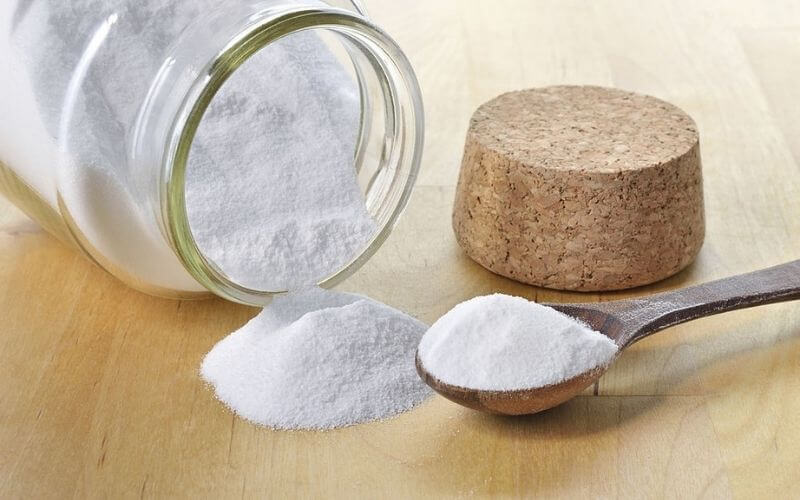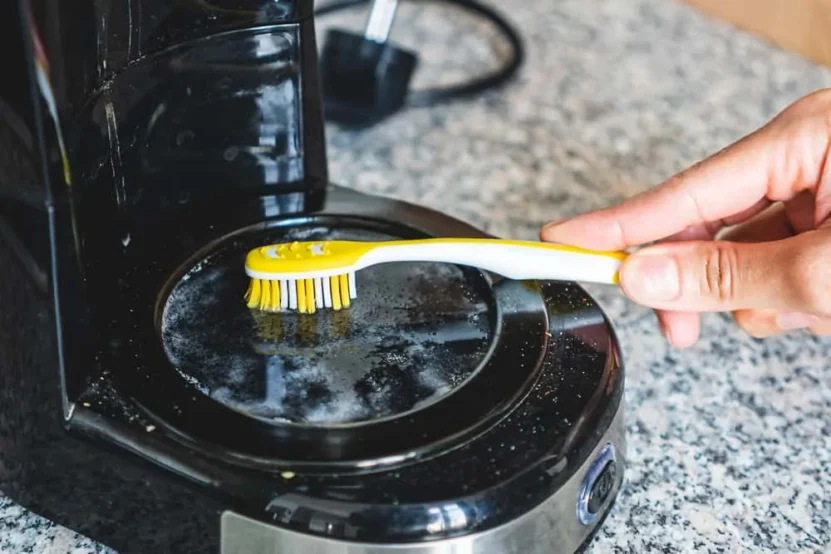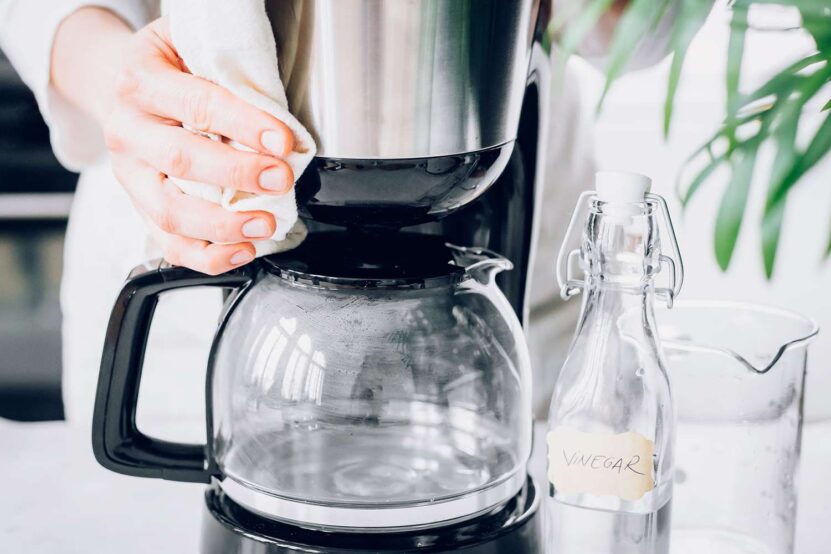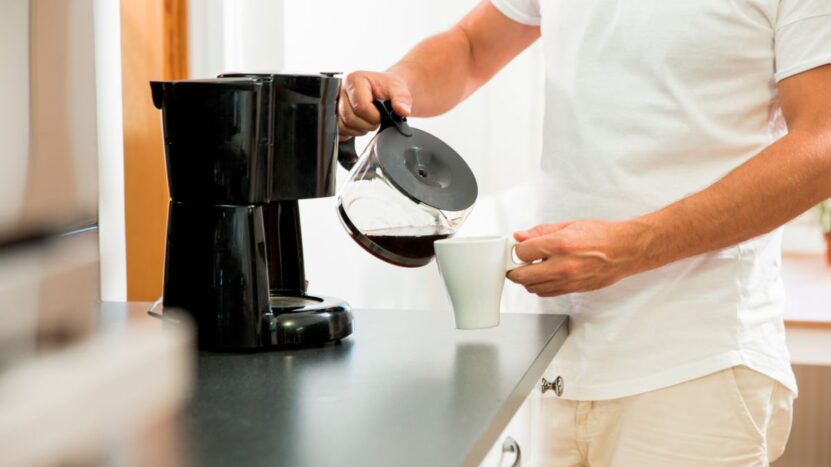For many people, coffee is an essential part of their daily routine. Brewing a fresh pot of coffee in the morning can be a comforting and invigorating experience. However, over time, coffee makers can accumulate mineral deposits, coffee stains, and residual oils that can affect the taste and quality of your brew. While there are various commercial cleaning products available on the market, using baking soda provides a safe and effective all-natural alternative. In this guide, we will walk you through the step-by-step process of cleaning your coffee maker with baking soda, ensuring a fresh and flavorful cup of coffee every time.

Gather your supplies:
- Baking soda
- Warm water
- A clean sponge or cloth
- A toothbrush or small brush with soft bristles
- White vinegar (optional)
Preparation:
Before you begin the cleaning process, unplug your coffee maker and ensure that it is completely cool. Empty any remaining coffee or filters and remove any detachable parts, such as the carafe, filter basket, and lid.
Create a baking soda solution:
In a clean sink or a large basin, mix a solution of warm water and baking soda. The ratio should be approximately 1 tablespoon of baking soda per cup of water. Stir the mixture until the baking soda is dissolved.
Clean the carafe and filter basket:
Submerge the carafe and filter basket in the baking soda solution. Use a sponge or cloth to scrub away any coffee stains, oils, or residue. For stubborn stains, you can sprinkle baking soda directly onto the surface and scrub gently with a sponge or toothbrush. Rinse thoroughly with clean water.
Clean the coffee maker:

Fill the water reservoir of your coffee maker with the baking soda solution. Run a brewing cycle without adding any coffee or filter. This will help clean the internal components of the coffee maker, removing any mineral deposits or buildup. Once the brewing cycle is complete, discard the solution.
Rinse the coffee maker:
Refill the water reservoir with clean water and run another brewing cycle. This will help remove any remaining baking soda residue from the coffee maker. Repeat this step a few times until the water runs clear and free of any baking soda traces.
Clean the exterior:
Dip a cloth or sponge into the baking soda solution and wipe down the exterior of the coffee maker. This will remove any stains or spills on the surface. Rinse with clean water and wipe dry.
Optional step: Vinegar cleaning

If your coffee maker has stubborn mineral deposits or a lingering taste, you can perform an additional cleaning with white vinegar. Fill the water reservoir with equal parts white vinegar and water. Run a brewing cycle without adding coffee or a filter. This will help descale the coffee maker and remove any residual flavors. After the brewing cycle is complete, run a few brewing cycles with clean water to rinse off any vinegar residue.
Reassemble and enjoy:
Once you have thoroughly cleaned and rinsed all the components, reassemble your coffee maker. Make sure that all parts are dry before putting them back together. Fill the water reservoir with fresh water, add your favorite coffee, and enjoy a clean and flavorful cup of joe.
Using baking soda to clean your coffee maker offers several advantages. It is non-toxic, environmentally friendly, and readily available in most households. It effectively eliminates stains, odors, and residue without the use of harsh chemicals. Additionally, baking soda is a natural deodorizer, leaving your coffee maker smelling fresh and clean.
Keeping your coffee maker clean is crucial for maintaining the quality and taste of your brew. By using baking soda as an all-natural cleaning solution, you can easily remove mineral deposits, coffee stains, and residual oils from your coffee maker, ensuring that each cup of coffee is fresh and delicious.
Regularly cleaning your coffee maker with baking soda not only improves the flavor of your coffee but also helps prolong the lifespan of your machine. It prevents clogs and ensures that water flows smoothly through the internal components, preventing damage and malfunction.

Here are a few additional tips to keep in mind when cleaning your coffee maker with baking soda:
- Frequency: It is recommended to clean your coffee maker with baking soda at least once a month, or more often if you use it frequently. Regular cleaning prevents the buildup of stains, residue, and mineral deposits, keeping your machine in optimal condition.
- Descaling: If you live in an area with hard water, mineral deposits can accumulate more quickly in your coffee maker. Descaling your machine regularly is essential to remove these deposits. Baking soda can be combined with white vinegar to create a powerful descaling solution. Simply mix equal parts white vinegar and water, add a tablespoon of baking soda, and run the solution through your coffee maker. Follow this with several brewing cycles of clean water to rinse off any remaining residue.
- Safety precautions: Always remember to unplug your coffee maker before cleaning to avoid any accidents. Ensure that all parts are completely cool before handling them. When scrubbing with baking soda, use gentle pressure to avoid scratching or damaging the surfaces.
- Alternative uses: Baking soda is a versatile cleaning agent and can be used for other purposes in your kitchen. It can effectively clean stains from cups, mugs, and teapots. It also works wonders in removing odors from your refrigerator, cutting boards, and trash cans.
Conclusion
In summary, cleaning your coffee maker with baking soda provides an all-natural, safe, and effective way to maintain its performance and extend its lifespan. By following these simple steps and incorporating regular cleaning into your routine, you can ensure that every cup of coffee is brewed to perfection. Enjoy the clean and satisfying taste of your favorite brew, knowing that your coffee maker is free from stains, odors, and residue.
